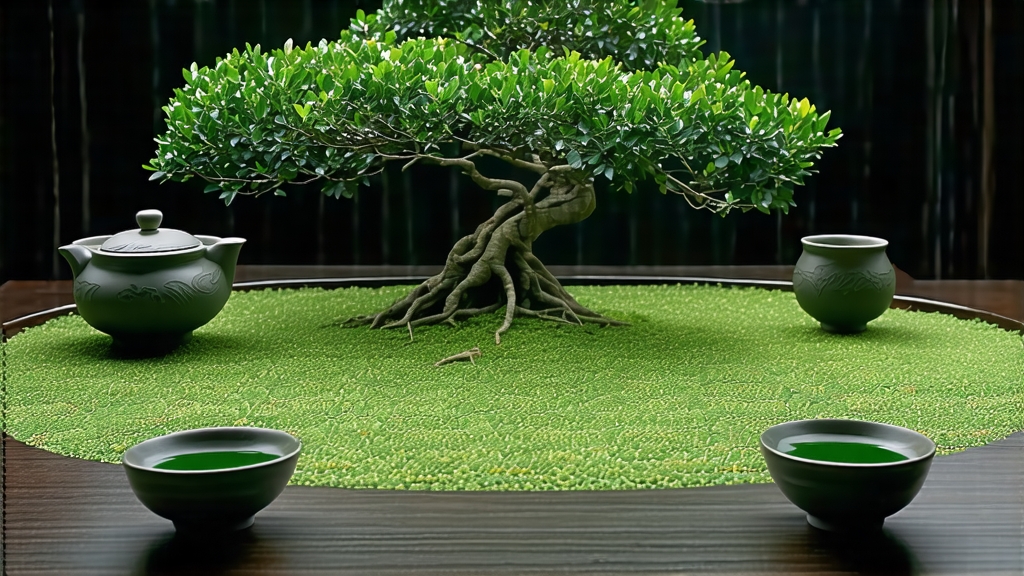
Tie Guan Yin, literally “Iron Goddess of Mercy,” is more than a tea; it is a cultural bridge that carries 300 years of Anxi county’s soil, fog, and prayer into a single cup. Born in the granite heartlands of southern Fujian, this oolong has travelled from hidden mountain temples to Parisian cafés, yet it still insists on being leaf, water, and time—nothing more, nothing less. To understand it is to witness Chinese craftsmanship compressed into seven grams of jade-green curls.
History: From Bodhisattva to Brand
Legend places the birth of Tie Guan Yin in the 1720s, when a poor farmer named Wei Yin found a rusted iron statue of Guanyin, the goddess of compassion, in a forgotten grotto. After dusting it clean and lighting incense, he dreamed of a lotus blooming on a cliff. The next morning he followed the vision to a stunted tea shrub exuding orchid fragrance. Cuttings from that bush became the mother tree; its offspring still surround the grotto today. Qing-dynasty scholars soon praised the tea for “iron bones and jade liquid,” and Anxi merchants carried it along the Min River to the port of Xiamen, where clipper ships spirited it to London and New York. By 1900, Tie Guan Yin outsold black tea in Singapore’s auctions, yet civil war and market fakery nearly erased its name. Revival arrived in 1982 when Anxi breeders released the clonal variety “Red Heart Guan Yin,” restoring both yield and the elusive floral cup.
Micro-terroirs: Five Flavors of One Mountain
Anxi is a crumpled landscape of subtropical granite peaks; altitudes range from 200 m to 1,600 m, and temperature swings of 15 °C between day and night slow leaf growth, condensing amino acids. Within 30 km, five micro-terroirs produce recognizably different Tie Guan Yin styles.
- Xianghua (Floral): Grown at 500–800 m in Huqiu and Gande, these gardens catch morning mist that burns off by noon. The leaf finishes light, with snap-pea sweetness and narcissus top notes.
- Nongxiang (Roasted): Lower valleys around Longjuan receive less sun; leaves are charcoal-baked in bamboo baskets for 30 hours, yielding cacao, toasted almond, and a copper liquor that ages like Burgundy.
- Yunxiang (Mineral): High cliffs of Xiping, birthplace of the legend, force roots into mineral fissures. The resulting cup tastes of wet slate and freesia, with a cooling menthol finish.
- Zhengwei (Original Flavor): Traditional 45 % oxidation and low firing preserve the living enzymes; liquor is pale jade, aroma like walking through an orchid greenhouse after rain.
- Chenxiang (Aged): Compression into 357 g bricks and yearly charcoal re-roasting create a dark amber infusion reminiscent of dried longan, leather, and incense—prized by Chaozhou traders as “digestive gold.”
Craft: The Rhythm of Sun, Wind, and Hand
Tie Guan Yin is plucked only in spring and autumn, when “one bud, three half-open leaves” align like jade spoons. The moment the basket is full, the leaves are paraded under afternoon sun for 20 minutes; ultraviolet rays trigger hydrolysis of glycosides, unlocking orchid precursors. Next comes yaoqing—shaking in rattan trays—performed five times over three hours. With each toss, the edges bruise, oxidizing faster than the centers; this partial tearing is the oolong signature, pushing oxidation to 30–50 %. After the leaf aroma shifts from grass to peach, it is tumble-heated at 190 °C for three minutes to kill green enzymes, then wrapped in white cloth balls and rolled 60 times under mechanical pressure, forcing residual juices to the surface where they caramelize during later roasts. A 12-hour rest allows inner moisture to migrate outward; finally, the leaf is charcoal-baked at 70 °C, cooled, re-baked, cooled again—up to seven cycles—until the master hears a metallic “tink” when drops of liquor hit the tasting spoon.
Brewing: Gongfu as Moving Meditation
Western teapots flatten Tie Guan Yin’s arc; instead, use a 120 ml gaiwan